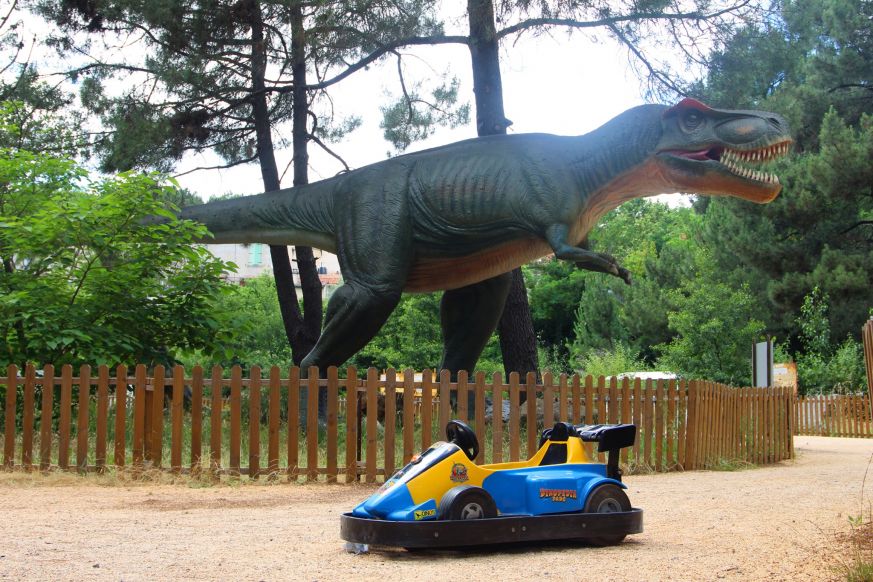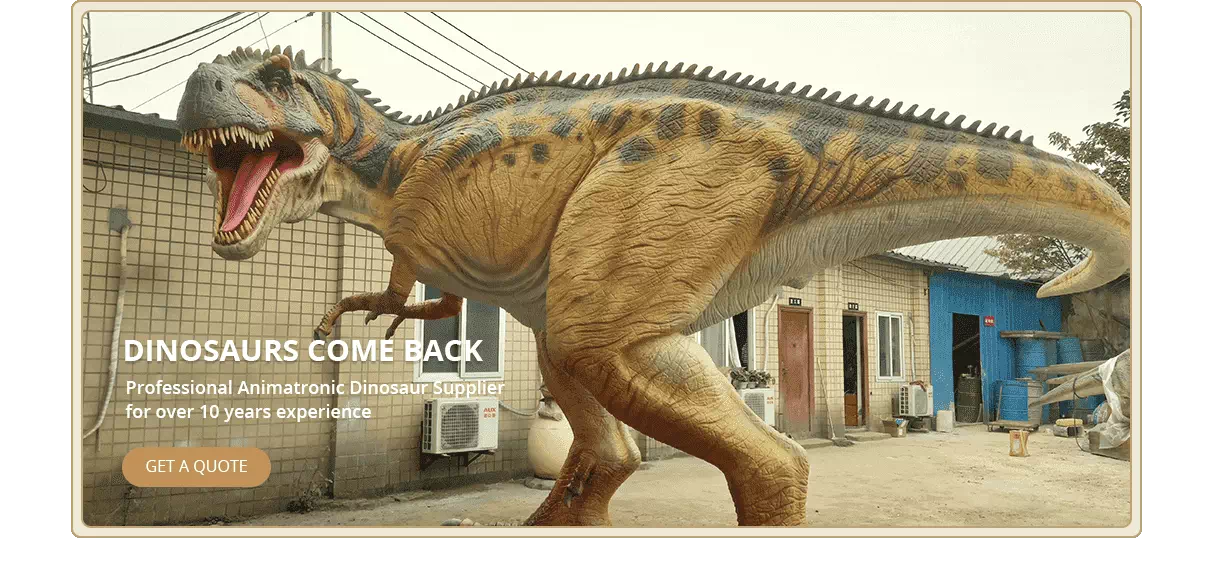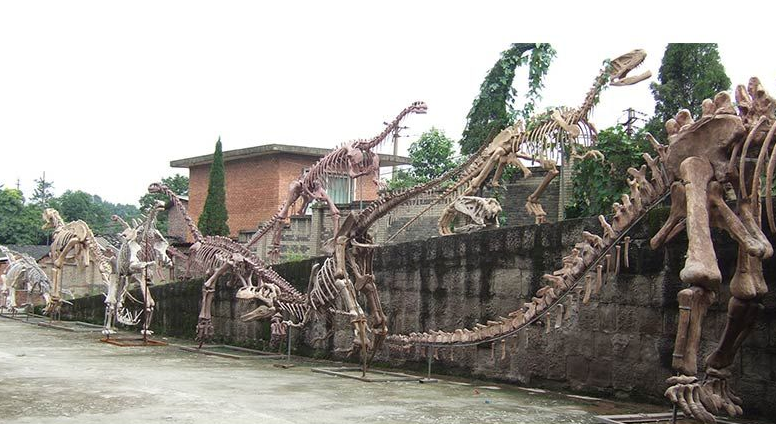How Were Dinosaur Fossils Formed?
Dinosaur fossils are among the most fascinating and valuable scientific discoveries, providing crucial insights into prehistoric life. But how exactly did these ancient creatures become fossilized? The process of fossil formation is complex and requires specific conditions over millions of years. In this article, we will explore the steps involved in how dinosaur fossils were formed and what factors contribute to their preservation.
Step 1: The Dinosaur Dies
The first step in the fossilization process is the death of the dinosaur. When a dinosaur dies, it is often in a place that is conducive to preservation, such as near water sources like rivers, lakes, or swamps. These environments help protect the body from scavengers, such as carnivores, and slow down the decomposition process. In some cases, the dinosaur's remains may have been buried quickly by sediment like sand, mud, or volcanic ash, which would further aid in the preservation.
Step 2: Burial Under Sediment
For fossilization to occur, the dinosaur’s remains must be rapidly buried under layers of sediment. This could happen due to events like floods, landslides, or volcanic eruptions. The sediment that covers the dinosaur helps protect the bones and prevents them from being destroyed by weathering or exposure to oxygen, which would cause the organic material to decay.
The burial of the dinosaur is a critical step in fossilization, as it isolates the remains from elements that could speed up decomposition. Over time, more and more layers of sediment accumulate on top of the remains, pressing down on the bones and creating the ideal conditions for fossilization to take place.
Fiberglass Dinosaur Fossil Replica for Sale
Step 3: The Process of Permineralization
Once the dinosaur’s bones are buried under layers of sediment, the next stage of fossilization begins: **permineralization**. This is the process by which the organic material in the bones is gradually replaced by minerals carried by groundwater. As water seeps into the bones, minerals such as calcium carbonate, silica, or iron begin to fill the empty spaces within the bone structure.
Over millions of years, these minerals slowly replace the original bone material, turning the bones into solid rock-like substances. This process preserves the bone’s original shape and structure, allowing scientists to study the fossilized remains. Permineralization is the most common way fossils are formed, especially in hard parts like bones and teeth.
Step 4: Compression and Solidification
As the layers of sediment continue to accumulate over time, the bones are compressed under immense pressure. This compression helps further solidify the fossil and can even cause some bones to become more compact, making them more durable over time. In some cases, the fossilized bones can become petrified, meaning they are completely turned into stone-like material due to the minerals that have replaced the organic material.
The pressure from the layers of sediment also causes the fossil to become embedded within the rock layers, where it remains protected from environmental changes. Eventually, these fossilized bones become part of the rock strata, which geologists can later study to understand Earth's history.
Step 5: Exposure and Discovery
After millions of years, geological processes such as erosion, earthquakes, or volcanic activity may expose the fossilized remains to the Earth's surface. Over time, wind, water, and other natural forces can erode the surrounding rock, gradually revealing the fossilized bones. This is when paleontologists can begin their search for dinosaur fossils, using tools to carefully excavate and uncover these ancient remains.
Exposure is the final step in the process of fossil formation. It may take millions of years for fossils to be discovered, which is why paleontologists often have to dig deep into sedimentary rock layers to find dinosaur fossils. Once found, these fossils are cleaned, studied, and analyzed to learn more about prehistoric life.
Factors Affecting Fossilization
Not all dinosaurs became fossils, and not all fossils are preserved in the same way. Several factors can influence whether a dinosaur’s remains will fossilize and the quality of the resulting fossil:
Burial Speed: Quick burial is crucial for fossilization. If the remains are not buried quickly, they may be scavenged or decomposed before fossilization can occur.
Environmental Conditions: Fossilization is more likely in environments that are stable and conducive to the preservation of bones, such as floodplains, wetlands, or areas with volcanic ash.
Type of Remains: Hard parts like bones and teeth are much more likely to fossilize than soft tissues, which typically decompose quickly and are rarely preserved.
Mineral Availability: The availability of minerals in the water that seeps into the bones is essential for permineralization. Without the right minerals, fossilization may not occur or could result in a poor-quality fossil.
Frequently Asked Questions (FAQ)
How long does it take for dinosaur fossils to form?
Fossilization is a process that takes millions of years. After the dinosaur’s death, the remains must be buried quickly and remain preserved for a long period. Over millions of years, minerals slowly replace the original bone material, solidifying into fossils.
Can dinosaur soft tissues become fossilized?
While rare, soft tissues can sometimes be preserved under exceptional conditions, such as in amber or under extreme pressure and low oxygen. However, in most cases, only hard tissues like bones and teeth fossilize, as soft tissues tend to decay much faster.
What is permineralization?
Permineralization is the process by which minerals from groundwater slowly replace the organic material in bones, turning them into solid rock-like structures. This process preserves the original shape and structure of the bones, allowing scientists to study the fossils in great detail.
Why are dinosaur fossils so rare?
Dinosaur fossils are rare because fossilization is an uncommon event that requires very specific conditions. Many dinosaurs were not buried quickly enough to be preserved, and many bones were destroyed over time by natural forces such as weathering, scavengers, or geological activity.
The formation of dinosaur fossils is a fascinating natural process that spans millions of years. It relies on a combination of rapid burial, mineralization, and the right environmental conditions. By studying these ancient fossils, scientists are able to piece together the history of life on Earth and gain insight into the creatures that once roamed our planet.















